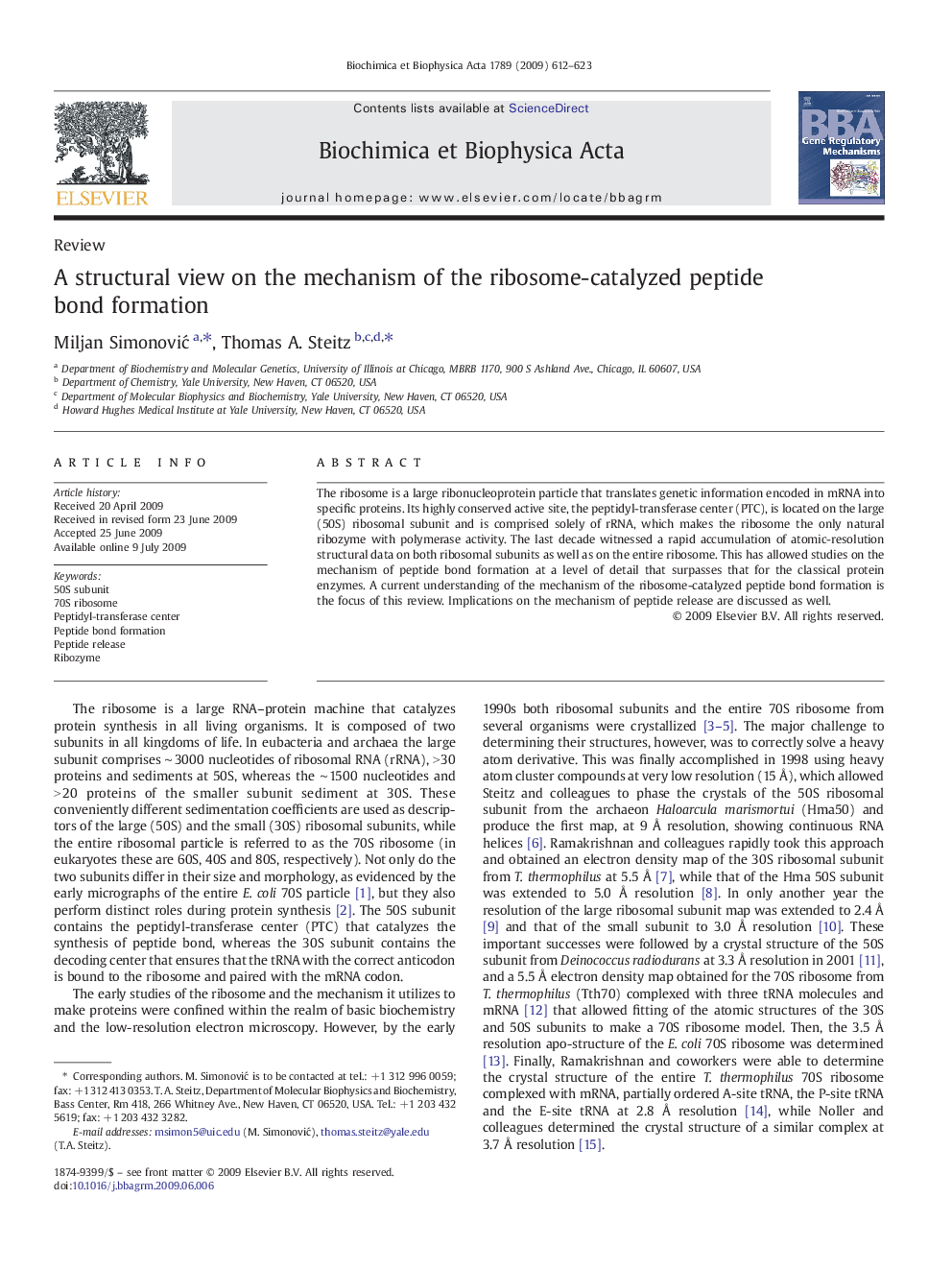| Article ID | Journal | Published Year | Pages | File Type |
|---|---|---|---|---|
| 1946874 | Biochimica et Biophysica Acta (BBA) - Gene Regulatory Mechanisms | 2009 | 12 Pages |
The ribosome is a large ribonucleoprotein particle that translates genetic information encoded in mRNA into specific proteins. Its highly conserved active site, the peptidyl-transferase center (PTC), is located on the large (50S) ribosomal subunit and is comprised solely of rRNA, which makes the ribosome the only natural ribozyme with polymerase activity. The last decade witnessed a rapid accumulation of atomic-resolution structural data on both ribosomal subunits as well as on the entire ribosome. This has allowed studies on the mechanism of peptide bond formation at a level of detail that surpasses that for the classical protein enzymes. A current understanding of the mechanism of the ribosome-catalyzed peptide bond formation is the focus of this review. Implications on the mechanism of peptide release are discussed as well.
